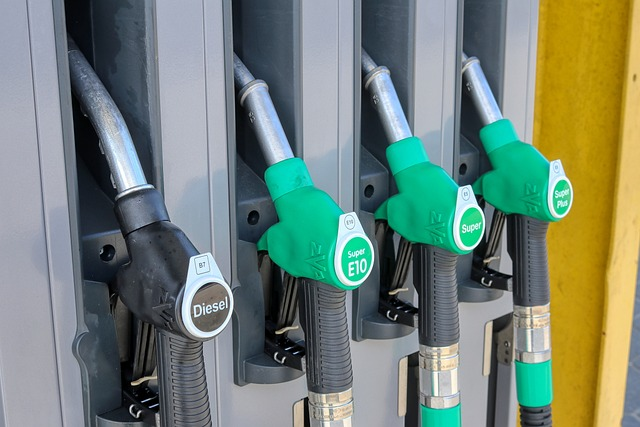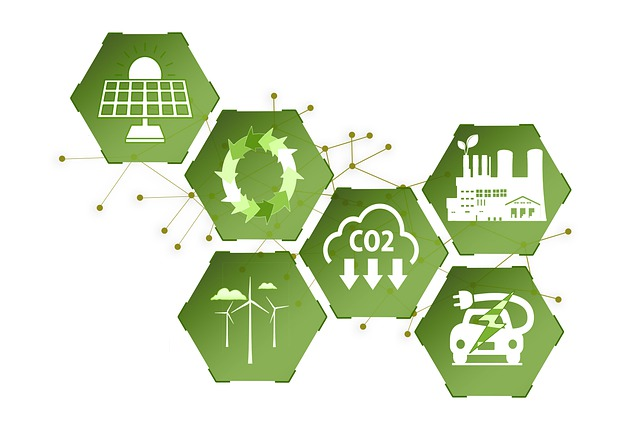Greenhouse Gas Emissions
Scope 1, 2 , and 3 relate to greenhouse gas (GHG) emissions. These gases trap heat in the earth’s atmosphere. At just the right amount they help keep the planet warm enough to sustain life, but too much and global warming occurs.
Carbon dioxide (CO2), methane (CH4), nitrous oxide (NO2), and fluorinated gases are the most significant greenhouse gases produced by humans. Since carbon dioxide (CO2) represents the most important of the greenhouse gases, GHG emissions are often also referred to as ‘Scope 1 2 and 3 carbon emissions’.

Greenhouse gas emissions occur through human activities such as burning fossil fuels, deforestation, and industrial processes. Fossil fuels are commonly used in transportation, electricity generation, and heating.
Industrial processes, such as cement production and chemical manufacturing, also release significant amounts of GHG. These processes involve the combustion of fuel, as well as the chemical reactions that produce CO2 as a by-product. Additionally, certain agricultural practices, like rice cultivation and livestock farming, contribute to emissions through the release of methane, another potent greenhouse gas.
In today’s world, where sustainability and environmental responsibility take centre stage, it is imperative to understand the impact of greenhouse gas emissions on our planet. They contribute significantly to climate change. Understanding their different categories or “scopes” is crucial for effective carbon accounting and reduction efforts.
Scope 1, 2 and 3 are the three categories of GHG emissions made by companies. The definitions, data and calculations to calculate these are maintained by ‘The Greenhouse Gas Protocol Initiative’ (GHG Protocol). This is a body made up from a very varied and diverse set of stakeholders.
The initiative was set up in 1998 with the goal of creating globally recognised greenhouse gas (GHG) accounting and reporting standards for industry.
So, what exactly are these three scopes, 1, 2, and 3? Let’s take a closer look.
The Importance of Monitoring Emissions
Monitoring emissions is crucial because it allows us to track our progress towards mitigating climate change. By measuring and analysing emissions data, businesses and governments can identify areas of high impact and develop strategies to reduce their carbon footprint.
Accurate monitoring provides valuable information for policymakers, helping them make informed decisions on environmental regulations and targets. It also enables businesses to assess their environmental performance and identify opportunities for improvement. Furthermore, monitoring allows for the comparison of emissions across different sectors and regions, facilitating the sharing of best practices and the development of innovative solutions.
The Climate Impact

Carbon emissions play a significant role in climate change. When released into the atmosphere, greenhouse gases trap heat from the sun, leading to an increase in global temperatures. This phenomenon, known as the greenhouse effect, is responsible for rising sea levels, extreme weather events, and the loss of biodiversity.
As emissions continue to accumulate in the atmosphere, the Earth’s climate system becomes imbalanced. This imbalance disrupts weather patterns, causing more frequent and intense heatwaves, droughts, hurricanes, and floods.
The melting of polar ice caps and glaciers, driven by rising temperatures, contributes to rising sea levels, this threatens coastal communities, ecosystems and the livelihoods of communities that depend on them.
Scope 1: Direct Emissions
Scope 1 carbon emissions refer to direct emissions produced by an organization’s own activities or assets.

These emissions encompass activities such as burning natural gas for heating, running company vehicles, or using petroleum-based fuels during a manufacturing process. These emissions are considered direct because they are produced on-site or by the organization reporting company’s own operations and business activities.
For instance, a manufacturing company may have a fleet of trucks that run on diesel fuel. The emissions resulting from the combustion of this fuel by the company’s vehicles would fall under scope 1 emissions.
It is important to note that scope 1 direct GHG emissions are not limited to just fuel combustion. Other examples include the emissions generated from chemical reactions in manufacturing processes, emissions from fugitive sources like leaks in equipment, and emissions from refrigerants used in cooling systems.
Organizations must identify and quantify their scope 1 emissions to effectively address their environmental impact. By doing so, they can develop targeted strategies to reduce these emissions and work towards a more sustainable future.
How to Measure and Reduce Scope 1 Emissions
To measure scope 1 emissions, organizations need to track and measure their fuel consumption, energy usage, and production processes. This data can be obtained through regular monitoring and recording of relevant metrics.
Once identified, companies can employ various strategies to reduce emissions. These may include implementing energy-efficient technologies, optimizing production processes, or transitioning to renewable energy sources.

For example, a company could invest in hybrid or electric vehicles for their fleet, reducing the reliance on petroleum-based fuels and subsequently lowering scope 1 emissions. Additionally, implementing energy-efficient equipment and technologies on site manufacturing, can lead to reduced energy consumption and, consequently, lower emissions.
Transitioning to renewable energy sources, such as solar or wind power, can also have a significant impact on carbon footprints. By generating clean energy on-site or sourcing it from renewable energy providers or local grid, public bodies and organizations can eliminate or greatly reduce their reliance on coal, gas, crude oil, and petroleum products, resulting in a substantial decrease in their carbon footprint.
Furthermore, organizations can collaborate with suppliers and partners to encourage sustainable practices throughout the supply and value chain. By promoting environmentally friendly alternatives and supporting suppliers who prioritize sustainability, organisations can indirectly reduce their scope 1 emissions.
Scope 2: Indirect Emissions from Energy Consumption

Scope 2 represents indirect emissions generated from the consumption of purchased energy for electricity, heating, or cooling by an organization. These indirect emissions may occur outside the organization’s direct control but are a result of its operations.
Understanding Scope 2 Emissions
Scope 2 emissions are produced when organizations rely on external energy sources, such as electricity purchased from the grid. While the emissions occur off-site, companies are still accountable for them because their demand for energy drives the generation of greenhouse gases.
Strategies for Minimizing Scope 2 Emissions
To minimize scope 2 emissions, organizations can consider options like increasing energy efficiency, adopting renewable energy sources, and participating in carbon offset programs. By making conscious choices regarding energy consumption, businesses can significantly reduce their environmental impact.
Scope 3: Other Indirect Emissions
Scope 3 carbon emissions account for all other indirect emissions that occur as a result of an organisation’s activities but are beyond its immediate control. These usually stem from sources such as transportation, waste disposal and management, employee commuting, and supply chain processes.
Exploring the Complexity of Scope 3 Emissions

Scope 3 emissions represent a significant challenge for organizations due to their complexity and wide-ranging impact.
Calculating scope 3 emissions requires collaboration with suppliers, transportation partners, and other stakeholders throughout the value chain.
Addressing these emissions is vital for a comprehensive and accurate carbon accounting approach.
Effective Approaches to Limit Scope 3 Emissions
Reducing scope 3 emissions requires a holistic approach that involves minimizing any waste generated, optimizing transportation routes, and promoting sustainable practices among stakeholders.
By engaging suppliers in sustainability journey and implementing sustainable procurement strategies, organisations can take meaningful steps towards reducing their scope 3 emissions.
The Significance of Scopes 1, 2, and 3
Consumers, employees, and investors increasingly prioritize companies that demonstrate a commitment to sustainability. By managing GHG emissions, businesses can improve their reputation and attract environmentally-aware stakeholders.

Moreover, the full emissions inventory (scopes 1, 2, and 3) is essential for tracking progress towards global sustainability goals, such as the United Nations’ Sustainable Development Goals (SDGs).
To Sum Up
Scope 1, 2 and 3 categorises GHG emissions.
Understanding (1) company process emissions and (2) upstream and downstream emissions is essential for developing effective strategies to mitigate their effects and avoid the worst of global warming.

By taking action, we can work towards a more sustainable and resilient future for our planet and future generations.
Check out our Tips On How To Save Energy In Business!
Check out our Tips On How To Save Energy In The Home
See more Helpful Content
Visit our Homepage
